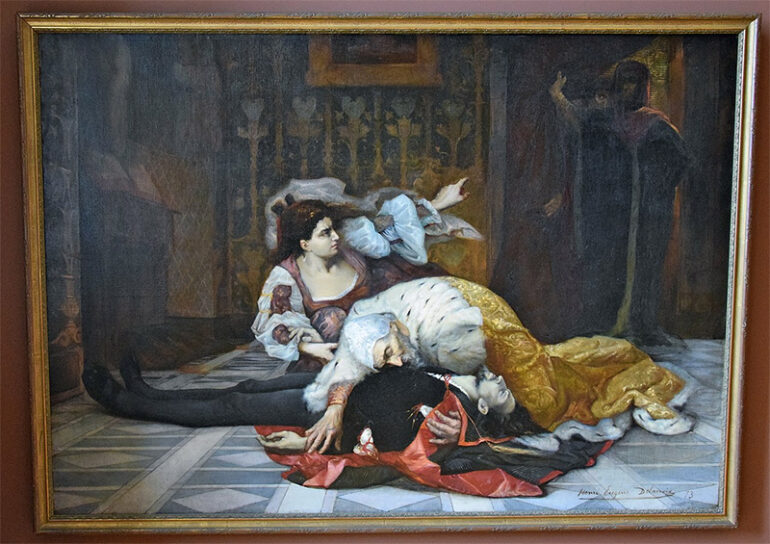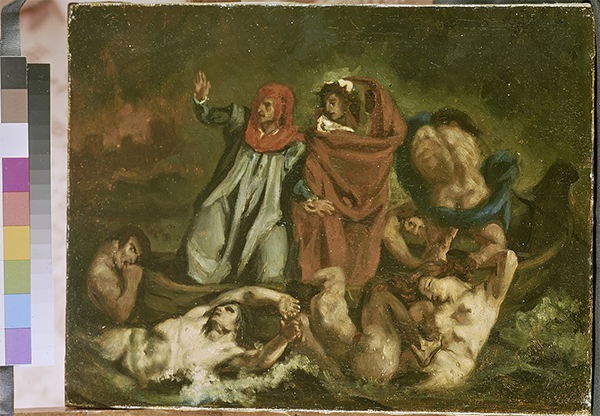Romanticism, a formidable artistic movement, emerged during the 19th century, disrupting the prevailing conventions of the era. Eugène Delacroix emerged as a prominent figure during this era of profound change, showcasing his artistic brilliance through a revolutionary style that mesmerized viewers and forever influenced the realm of art. Delacroix’s art captivated viewers with its vivid hues, energetic brushwork, and expressive themes, delving into the profound realm of human emotions and experiences. By dismissing conventional ideals and prioritizing personal expression, he cleared the path for a fresh epoch of artistic liberty, establishing himself as a pivotal figure in the advancement of Romanticism.
The Rise of Romanticism in Art
Romanticism, an aesthetic movement in the 1800s, defied traditions. Artists sought to evoke strong emotions and explore the human psyche. Eugène Delacroix was a major player in Romanticism. He revolutionized visual arts with his brilliant colors, vigorous strokes, and engaging ideas, changing the terrain of artistic expression. Delacroix revolutionized art because to his ability to capture powerful emotions and his refusal to submit to traditional artistic standards. Delacroix helped Romanticism emerge from this creative upheaval.
The Life and Works of Eugene Delacroix
Romantic artist Eugene Delacroix’s fascinating works shaped art. After starting his career in 1798, French artist Delacroix was heavily affected by history, literature, and foreign cultures. The artist’s vibrant colors and remarkable arrangements often depicted historical events, mythological tales, and Oriental elements. “Liberty Leading the People,” Delacroix’s masterpiece, captured the heart of insurrection and became a symbol of the French Revolution. Delacroix’s pioneering approaches and profound emotional expression continue to inspire artists today.
Delacroix’s Influence on Romanticism
Delacroix made a lasting impact on the artistic scene during the 19th century. The way he revolutionized the art of painting, with his use of vivid hues, energetic strokes, and expressive themes, completely fascinated his peers and remains a source of inspiration for present-day artists. The distinctive nature of Delacroix’s artistic style lies in his fearless examination of the depths of human emotions, as well as his remarkable talent for expressing unfiltered ardor in his creations, which distinguishes him from his contemporaries. The impact he had on Romanticism is evident in the creations of later artists who adopted his emotive approach, challenging conventional art and opening doors to a fresh era of creative liberty and self-expression.
Legacy and Impact of Delacroix’s Romanticism
Delacroix’s Romanticism shaped art for years. He challenged his times by using brilliant colors, vigorous strokes, and passionate topics, inspiring future painters to extend their imaginations. Delacroix inspired poets, novelists, and musicians beyond painting. His emphasis on individuality and emotions shaped the Romantic movement. This still captivates and inspires artists today. Delacroix’s pioneering methods continue to impact modern artists’ expressions.
Delacroix had a huge impact on Romanticism. He revolutionized creative representation in the 19th century by using innovative approaches, investigating deeply emotional themes, and challenging classical aesthetics. Delacroix’s legacy inspires and fascinates modern artists. His daring exploration of human emotions and steadfast emphasis on individuality are profoundly moving. His vibrant colors, powerful strokes, and unabashed excitement demonstrate art’s everlasting power to evoke deep emotions and challenge norms.
Photo Attribution:
1st & featured image by https://commons.wikimedia.org/wiki/Category:Paintings_by_Eug%C3%A8ne_Delacroix#/media/File:La_mort_de_Jacopo_DELACROIX_1873.jpg

